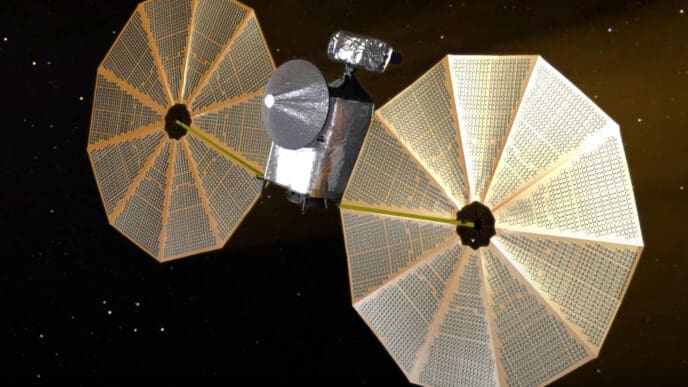2025 promises to be an exciting year for astronomical enthusiasts, with a series of moon events set to captivate observers worldwide. Among the highlights are the Major Lunar Standstill, several eclipses, and captivating conjunctions. These events present unique opportunities to witness the moon’s interactions with other celestial bodies, offering breathtaking views and memorable experiences.
On January 3, 2025, an early evening gaze southwest will reveal the moon alongside Venus, with Saturn perched higher. A day later, Saturn will be briefly hidden from view by the moon for those in Europe, while North American observers will enjoy a close pairing.
February 1 will see the moon again placed near Venus in the western sky, offering an opportunity to spot Venus’s crescent form with a telescope. The rare event on January 13-14 will involve Mars being occulted by a full moon, visible for over an hour, with precise timing depending on geographic location.
March will host a notable total lunar eclipse, or ‘blood moon,’ on the night of the 13th to 14th. During this event, the moon will be washed in a reddish hue for at least 65 minutes. Later in the month, on March 29, a partial solar eclipse will grace the early sky, with visibility stretching from the northeastern U.S. through to northern Russia.
Celestial displays continue with a conjunction of the moon, Venus, and the Pleiades on June 22. July 22 offers a morning spectacle of the moon, Venus, and Jupiter, enhanced by the presence of Aldebaran. A unique array of the moon with Venus, Jupiter, and Mercury unfolds from August 19 to 21.
A spectacular alignment involving the moon, Venus, and Regulus can be seen on September 19. The second total lunar eclipse of 2025 will also occur on September 7, viewable best in regions across Asia and the Indian subcontinent.
For solar enthusiasts, a significant partial eclipse is set for September 21, and later, on November 5, a supermoon—the closest since 2019—will dominate the evening sky. The year’s lunar magic culminates with a low-hanging Strawberry Moon on June 10, part of the major lunar standstill cycle.
With a multitude of celestial events in 2025, observers have a fantastic opportunity to engage with the night sky. These events not only offer visual splendor but also provide a gateway to deeper understanding and appreciation of astronomical phenomena. Whether viewed through telescopes or with the naked eye, these moon events promise to delight and inspire.
Source: Space












